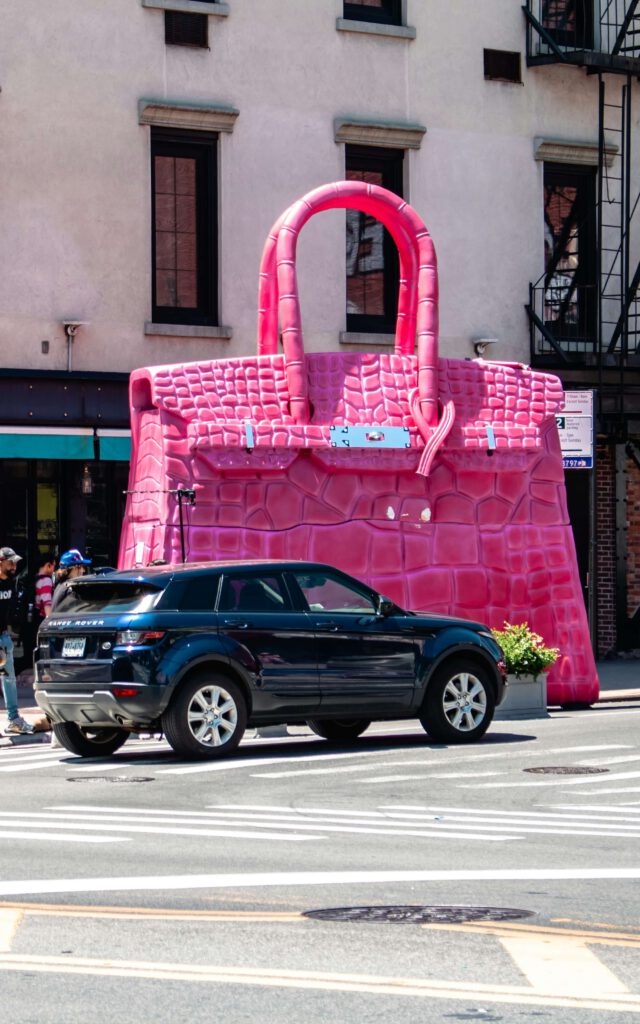The AI Trademark Problem No One Warned You About
Adrian Thomas
10 Nov 2025
•5 min read

Artificial intelligence has democratized creativity. Today, any entrepreneur can use tools like ChatGPT, Midjourney, DALL-E, or Canva’s AI features to generate professional logos, marketing copy, social media graphics, and complete brand identities—often in minutes and for minimal cost.
It’s an exciting development for small businesses and startups operating on tight budgets. But beneath this creative revolution lurks a significant legal danger that many business owners don’t see coming: trademark infringement.
Courts across the country are beginning to wrestle with a fundamental question: When AI-generated content infringes on someone else’s trademark, who’s responsible? And perhaps more importantly for business owners: How do you avoid becoming the defendant in an expensive trademark lawsuit when you thought you were just using an AI tool to help your business?
The Problem: AI Doesn’t Create in a Vacuum
Here’s what many business owners don’t realize about AI-generated content: these tools are trained on massive datasets scraped from across the internet—including millions of trademarked logos, brand names, slogans, and copyrighted designs.
When you prompt an AI to “create a logo for my coffee shop with a modern, minimalist aesthetic,” that AI is drawing on patterns it learned from analyzing thousands (or millions) of existing coffee shop logos. Some of those logos are protected trademarks. The result? Your “original” AI-generated logo might bear a confusing similarity to an existing registered mark—or worse, might be a near-replica.
In 2025, multiple businesses have found themselves facing cease-and-desist letters after using AI-generated logos that closely resembled established brand identities. In several cases, the business owners had no idea their AI-generated content was problematic until they received legal threats.
The Liability Question: “But the AI Made It!”
When trademark infringement happens through AI-generated content, the natural response is: “I didn’t copy anything—the AI created this!”
Unfortunately, that defense doesn’t hold up in court.
Trademark infringement occurs when someone uses a mark in commerce that is likely to cause confusion about the source or affiliation of goods or services. The law doesn’t require intentional copying—it only requires likelihood of confusion. Whether a human designer or an AI algorithm created the infringing content is largely irrelevant to the legal analysis.
Courts are making this clear: the business owner who uses the AI-generated content bears the liability risk. Just as you’d be responsible for trademark infringement if you hired a graphic designer who unknowingly copied someone else’s work, you’re responsible when AI does the same thing.
Current litigation suggests that courts will apply traditional trademark infringement analysis to AI-generated content. They’re asking whether there’s a likelihood of confusion between the marks, whether the goods or services are related, whether the marks are used in similar channels of commerce, and what the strength of the senior mark is. The fact that AI was involved in creating the allegedly infringing content simply isn’t a defense.
For Businesses Using AI Tools: How to Protect Yourself
If you’re using AI to create brand materials, marketing content, or business assets, there are essential steps you must take to minimize your legal risk.
Never use AI-generated content without human review. AI should be a starting point, not the final product. Every piece of AI-generated content—especially logos, brand names, and slogans—should be reviewed by a human before being used in commerce. Better yet, have it reviewed by a trademark attorney.
Conduct trademark clearance searches before adopting any AI-generated logo or brand name. This means searching the USPTO’s TESS database for registered and pending marks, searching state trademark databases, conducting common-law searches through Google, social media, and domain names, and checking industry-specific directories. This is especially critical for AI-generated brand names and logos, where the risk of similarity to existing marks is highest.
Document your AI usage and modifications. Keep records showing what prompts you used, what the AI originally generated, what human modifications you made, and why you selected the final version. This documentation won’t shield you from liability, but it can demonstrate good faith and may be relevant if you face enforcement action.
Consider professional design for critical brand elements. For your primary logo, business name, and core brand identity elements, consider working with a human designer rather than relying solely on AI. Professional designers conduct their own clearance research, create truly original work, can provide warranties about originality, and understand trademark considerations. Use AI for lower-stakes content like social media graphics, blog illustrations, and internal materials where trademark risk is lower.
Train your team about AI limitations. If employees or contractors are using AI tools to create content for your business, ensure they understand that AI output is not automatically “original” or “trademark-safe,” that all AI-generated content must be reviewed and vetted, and that they must follow the company’s approval process for brand materials.
Use AI platforms responsibly. When using AI tools, read the terms of service carefully to understand liability provisions, understand what indemnification the platform offers (if any), use premium versions that may offer better legal protections, and avoid prompts that specifically reference other brands, such as “make it look like the Nike swoosh but different.”
For Brand Owners: Protecting Your Marks from AI-Generated Infringement
If you own established trademarks, AI presents a new enforcement challenge. Here’s how to protect your brand.
Monitor digital marketplaces and AI platforms. AI-generated content often appears first on print-on-demand platforms like Redbubble, TeeSpring, and Etsy, as well as on Amazon and other e-commerce sites, social media, and NFT marketplaces. Consider using trademark monitoring services that track these channels.
Understand platform takedown procedures. Major platforms are developing or already have procedures for reporting AI-generated trademark infringement. Familiarize yourself with how to report infringement on each platform, what evidence is required, how quickly platforms respond, and whether platforms have specific AI-related policies.
Send clear cease-and-desist letters. When you discover AI-generated infringement, your cease-and-desist letter should clearly identify your registered trademark, show the infringing AI-generated content, explain the likelihood of confusion, demand specific action such as ceasing use and destroying materials, and set a reasonable deadline. Many infringers using AI-generated content didn’t intend to infringe and will comply quickly once notified.
Consider trademark watch services. Professional trademark watch services can monitor new trademark applications that might conflict with your marks, domain name registrations, social media accounts, and e-commerce listings. These services are increasingly incorporating AI-detection capabilities.
Update your trademark enforcement strategy. Your enforcement strategy should now account for the high volume of potential AI-generated infringements, the often unintentional nature of AI-related infringement, the need for education alongside enforcement, and the possibility that infringers may lack resources for protracted litigation.
What Courts Are Saying: Recent Developments
While the intersection of AI and trademark law is still evolving, several important principles are emerging from recent cases.
In the ongoing case of Getty Images v. Stability AI, Getty alleges that Stability AI “scraped” millions of copyrighted images—including Getty’s watermarked images—to train its image generation AI. While this case focuses primarily on copyright, it includes trademark claims and could significantly impact how AI training is viewed in the context of IP rights.
Trademark offices are also adapting. The USPTO is implementing AI-powered tools for examining trademark applications, suggesting that regulators view AI as a tool that must work within existing trademark frameworks rather than requiring entirely new legal structures. Courts reviewing AI-related trademark disputes are applying traditional likelihood-of-confusion analyses rather than creating AI-specific exceptions or defenses.
Looking Ahead: What to Expect
As AI tools become more sophisticated and widely used, we’re likely to see increased litigation testing the boundaries of AI-generated content and trademark law. Platform liability questions about whether AI tool providers share responsibility for infringement will become more pressing. We’ll likely see clearer guidance from courts and the USPTO about best practices, along with industry standards developing around AI-generated content verification. Insurance products addressing AI-related IP liability are also beginning to emerge.
The Bottom Line
AI is a powerful tool for business creativity and efficiency—but it’s not a substitute for proper trademark clearance and legal diligence. Whether you’re using AI tools or protecting your brand from AI-generated infringement, the key is to stay proactive, not reactive.
If you’re using AI to create brand materials, don’t skip the trademark search. The money you save by using AI instead of a designer will be quickly consumed by legal fees if you end up infringing someone else’s mark.
If you’re a brand owner, start monitoring for AI-generated infringement now. The volume of potentially infringing content will only increase, and early enforcement sets important precedents for protecting your brand.
The intersection of AI and trademark law is complex and rapidly evolving. The good news? You don’t have to navigate it alone.
If you’re concerned about trademark issues related to AI-generated content—whether you’re using AI tools for your business or protecting your brand from infringement—Hebert-Thomas Law, PLLC can help. We offer comprehensive trademark clearance searches, review of AI-generated brand materials, trademark registration services, cease-and-desist letters and enforcement actions, and trademark portfolio management.
Schedule a consultation today to ensure your business is protected in the age of AI.
This article is for informational purposes only and does not constitute legal advice. For advice specific to your situation, please consult with a qualified attorney.
Subscribe to newsletter
Subscribe to receive the latest blog posts to your inbox every week.
By subscribing you agree to with our Privacy Policy.



